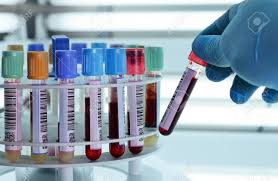What is the Purpose of a Drug Test?
Drug testing is used for detection of non-steroidal anti-inflammatory drugs (NSAIDs) and/or sedative/tranquilizer agents, but can also be used to detect anabolic steroids and analgesic (pain-relieving) agents. The presence of analgesics could mask current or chronic lameness, while sedatives/tranquilizers are used for behavior modification. The decision to screen for drugs is at the discretion of the buyer. When making the decision to test for drugs, buyers should consider the horse’s intended use, the price of the horse, and any additional information known about the horse’s history.
How Does It Work?
Blood samples (plasma or serum) are most commonly used to screen for drugs as part of a prepurchase evaluation. In some instances, however, urine might be required. The presence of drugs in the sample is detected by ELISA (enzyme-linked immunosorbent assay) or TLC (thin-layer chromatography). An ELISA test, the sample will react with the enzyme, typically causing a color change that will indicate the amount of enzyme bound and, thus, the presence of a drug. A TLC test uses a specialized absorbent plate that will separate different substances as they move across the plate. The resulting marks will indicate which substances are present.

What Do You Test For?
The presence of NSAIDs and behavior-modifying drugs are most common substances owners elect to test for in prepurchase evaluations. Common NSAIDs include phenylbutazone, flunixin, firocoxib, celecoxib, deracoxib, meclofenamic acid, ibuprofen, acetylsalicylic acid, naproxen, and carprofen. Common long-acting tranquillizers are reserpine and fluphenazine. Many other drugs can be tested upon request, including acepromazine, xylazine, diazepam, lidocaine, isoxsuprine, and more. Certain laboratories offer screening for anabolic steroids upon request, but this often requires submission of a urine sample. Anabolic steroids include stanozolol, methandrostenolone, boldenone, nandrolone, and testosterone.
How Long Does It Take to Get the Results?
Basic NSAID screening can be completed in four to 10 days. Screening for reserpine and fluphenazine takes about five to 10 to 15 days. If time is limited, some laboratories offer a 7-day turnarounds for an additional charge. Screening for anabolic steroids requires about 10 days.









No Comments